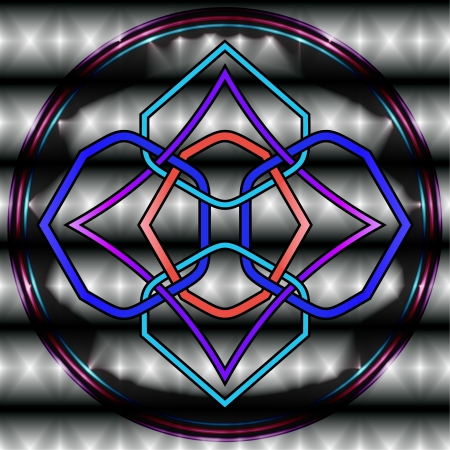Introduction to Tarot and Oracle Decks
In recent years, Tarot and Oracle decks have woven themselves into the fabric of modern American spiritual and self-care practices. Whether displayed on coffee tables, tucked into bedside drawers, or featured in social media rituals, these card decks offer more than just beautiful imagery—they invite introspection, guidance, and a sense of connection with something greater. Both Tarot and Oracle decks serve as tools for reflection and personal growth, but they each carry their own unique energy and approach. For many Americans seeking meaning in the chaos of everyday life, these decks provide a gentle nudge toward understanding oneself and navigating the twists and turns of destiny. As we explore the art and symbolism behind these cards, we uncover not only their visual allure but also the powerful ways they help people find clarity, comfort, and direction in today’s world.
2. Symbolism in Tarot: Tradition and Structure
Tarot cards are celebrated for their deep-rooted symbolism and time-honored imagery, which have been passed down through centuries and across cultures. Unlike the more flexible designs found in many oracle decks, Tarot adheres to a structured system that guides both artists and readers. This tradition is especially evident in the iconic Rider-Waite-Smith deck, which has set the visual standard for modern Tarot.
The Foundations of Tarot Symbolism
Each Tarot card is infused with symbols—colors, objects, figures, and settings—that carry specific meanings. For example, the High Priestess card often features a crescent moon, pomegranates, and pillars, all of which reference themes like intuition, mystery, and duality. These images aren’t arbitrary; they form a visual language that invites introspection and spiritual exploration.
Major vs. Minor Arcana: Structured Imagery
Tarot decks are divided into two main sections: the Major Arcana (22 cards) and the Minor Arcana (56 cards). Each group follows its own symbolic structure:
| Arcana Type | Number of Cards | Common Symbols | Themes |
|---|---|---|---|
| Major Arcana | 22 | The Fool’s bag, The Magician’s tools, Death’s white rose | Life lessons, fate, spiritual growth |
| Minor Arcana | 56 | Swords, Cups, Pentacles, Wands; numbered suits | Daily life, emotions, challenges, actions |
How Symbolism Guides Interpretation
The standardized imagery in Tarot not only grounds the deck in tradition but also offers a roadmap for interpretation. Readers draw upon these universal symbols to access deeper truths about life’s journey. Whether you’re seeking clarity or comfort, the familiar icons within Tarot can feel like an old friend guiding you through uncertain times—a reminder that your story is part of something larger than yourself.
![]()
3. Artistic Expression in Oracle Decks: Freedom and Diversity
Oracle decks are where artistic freedom truly flourishes. Unlike traditional Tarot, which follows a fixed structure and set of archetypes, Oracle decks offer creators a blank canvas to express their vision, beliefs, and intuition. This openness invites a remarkable variety of themes—from nature spirits and moon phases to pop culture icons or affirmations—allowing each deck to become a deeply personal work of art. In the American context, this diversity speaks to the country’s spirit of individualism and self-expression, making Oracle decks especially popular for those seeking guidance that resonates with their unique journey.
The symbolism within Oracle cards is just as varied as the art itself. Because there are no strict rules, artists and authors can weave in personal mythology, cultural references, or even contemporary social messages. This means that every Oracle deck carries its own symbolic language, inviting readers to connect with meanings that feel authentic to their current life circumstances. For many Americans, this blend of creativity and intuition makes Oracle decks not only tools for divination but also sources of daily inspiration and emotional healing. Each card becomes an invitation to explore new perspectives and embrace one’s individuality on the path of self-discovery.
4. How Art Influences Emotional Connection
For many Americans, the artwork on tarot and oracle decks is not just a matter of aesthetics—it’s the heart of their emotional and spiritual journey. The visual language of these cards often acts as an unspoken dialogue between the deck and its reader, sparking feelings, memories, and intuitive insights that go far beyond words. In both tarot and oracle traditions, the art style can make or break a personal connection to the cards.
American audiences, coming from a tapestry of backgrounds and beliefs, tend to gravitate toward decks whose imagery feels relatable or deeply evocative. Whether it’s the moody symbolism in traditional Rider-Waite-Smith tarot, the inclusive modern art found in contemporary indie decks, or the gentle illustrations in popular oracle cards, each style offers a unique invitation for self-reflection and healing.
Below is a comparison of how different artistic choices influence emotional resonance for American users:
| Art Style | Common in Tarot/Oracle? | Emotional Resonance (U.S. Audiences) |
|---|---|---|
| Traditional Symbolism (e.g., medieval, esoteric) | Mainly Tarot | Creates a sense of mystery, nostalgia, and reverence for tradition; appeals to those seeking structure |
| Modern/Pop Culture Themes | Both Tarot & Oracle | Feels accessible and relevant; attracts younger or diverse readers looking for representation |
| Nature & Animal Imagery | Mainly Oracle | Elicits calmness and connection to earth; ideal for meditative or healing practices |
| Abstract or Minimalist Art | Both Tarot & Oracle | Invites open interpretation; resonates with those valuing intuition over prescribed meanings |
For many in America, selecting a deck is a deeply personal act—one influenced by identity, lived experience, and emotional needs. Some are drawn to bold colors that ignite passion, while others seek soft pastels that soothe anxious minds. The symbols woven into each card become anchors for hope or mirrors for self-discovery. Whether the deck’s energy feels like an old friend or an inspiring mentor, art remains the bridge that turns mere paper into a tool for soulful guidance.
5. Cultural Influences in American Deck Art
Modern Tarot and Oracle decks are more than just mystical tools—they are mirrors reflecting the vibrant tapestry of American culture. The art and symbolism woven into these cards often pulse with uniquely American values, aesthetics, and pop culture references. From the bold colors and dynamic imagery inspired by street art to subtle nods to Hollywood, civil rights movements, and iconic Americana, contemporary decks tell stories that resonate deeply with their American users.
Celebrating Diversity and Inclusion
One of the most profound ways American culture shapes deck art is through a celebration of diversity. Illustrators and creators intentionally include people of all races, body types, genders, and backgrounds, reflecting America’s multicultural spirit. Where traditional European decks might center around medieval archetypes, American-made decks frequently feature modern figures—activists, artists, and everyday individuals—making the wisdom of the cards accessible and relatable for everyone.
Pop Culture as Symbolic Language
Pop culture is another powerful influence. It’s not uncommon to find Tarot or Oracle cards inspired by comic books, movies, music, or even technology. This playful approach bridges generations and invites both seasoned readers and newcomers to connect with familiar motifs. Imagine drawing a card that channels the energy of a superhero or echoes a line from a beloved film; such symbolism infuses readings with humor, nostalgia, and a sense of shared cultural experience.
Aesthetics Rooted in American Art Movements
The look and feel of many decks borrow from celebrated American art movements—think Art Deco elegance, psychedelic 60s patterns, or minimalist mid-century design. These visual cues ground each deck in a specific cultural moment while inviting introspection about how those eras continue to shape our destinies today. The result is an ever-evolving landscape where tradition meets innovation in every shuffle.
Ultimately, the fusion of American values, aesthetics, and pop culture gives modern Tarot and Oracle decks their signature warmth and resonance. They invite us not only to seek answers but also to honor our collective stories—embracing healing, self-discovery, and destiny through imagery that feels right at home in our hearts.
6. Choosing Your Deck: Art, Symbolism, and Personal Destiny
Selecting the right Tarot or oracle deck is an intimate, soulful experience that can shape your spiritual journey and personal growth. In the American context, where self-expression and individuality are deeply valued, the art and symbolism in each deck become more than mere aesthetics—they act as mirrors reflecting your inner world and guiding you toward your true path.
Letting Intuition Guide You
The first step is to trust your gut. As you browse through decks—whether at a local metaphysical shop in Portland or online from your Brooklyn apartment—notice which imagery catches your eye and stirs something within you. The colors, artistic style, and symbolic elements should feel like a gentle invitation to explore your intuition further. If a card’s design makes you pause or evokes emotion, it’s often a sign that the deck resonates with your unique energy.
Art as a Portal for Healing
The artwork in Tarot and oracle decks isn’t just decoration; it serves as a healing tool. Vivid illustrations of nature, cosmic patterns, or ancestral figures can help unlock emotions or memories tucked deep within. For many Americans drawn to practices of self-care and wellness, these visuals offer a safe space to process feelings and spark transformation. When choosing your deck, consider how the art style supports your need for comfort, challenge, or inspiration on your healing journey.
Symbols That Speak to Your Soul
Every symbol on a card carries layers of meaning—some universal, some personal. In the diverse tapestry of American life, you may find yourself drawn to decks featuring multicultural symbols or contemporary imagery reflecting your identity. Pay attention to whether the symbols empower you to reflect on your story or encourage new perspectives about your destiny. The right symbolism acts like a compass, pointing you toward lessons and opportunities for growth tailored to your life’s path.
Your Deck as a Companion on Your Path
Ultimately, your chosen deck becomes a sacred companion—a friend who listens without judgment and gently illuminates possibilities ahead. Whether you’re seeking clarity during transitions, guidance through uncertainty, or affirmation of your dreams, let the art and symbolism of your cards support you. As you work with them over time, their messages will deepen, echoing the rhythms of change in your heart and life.
So when you choose your next Tarot or oracle deck, remember: look for art that heals, symbols that empower, and an intuitive resonance that feels like coming home. Your destiny is unfolding with every shuffle and draw—guided by beauty, meaning, and the wisdom within.


